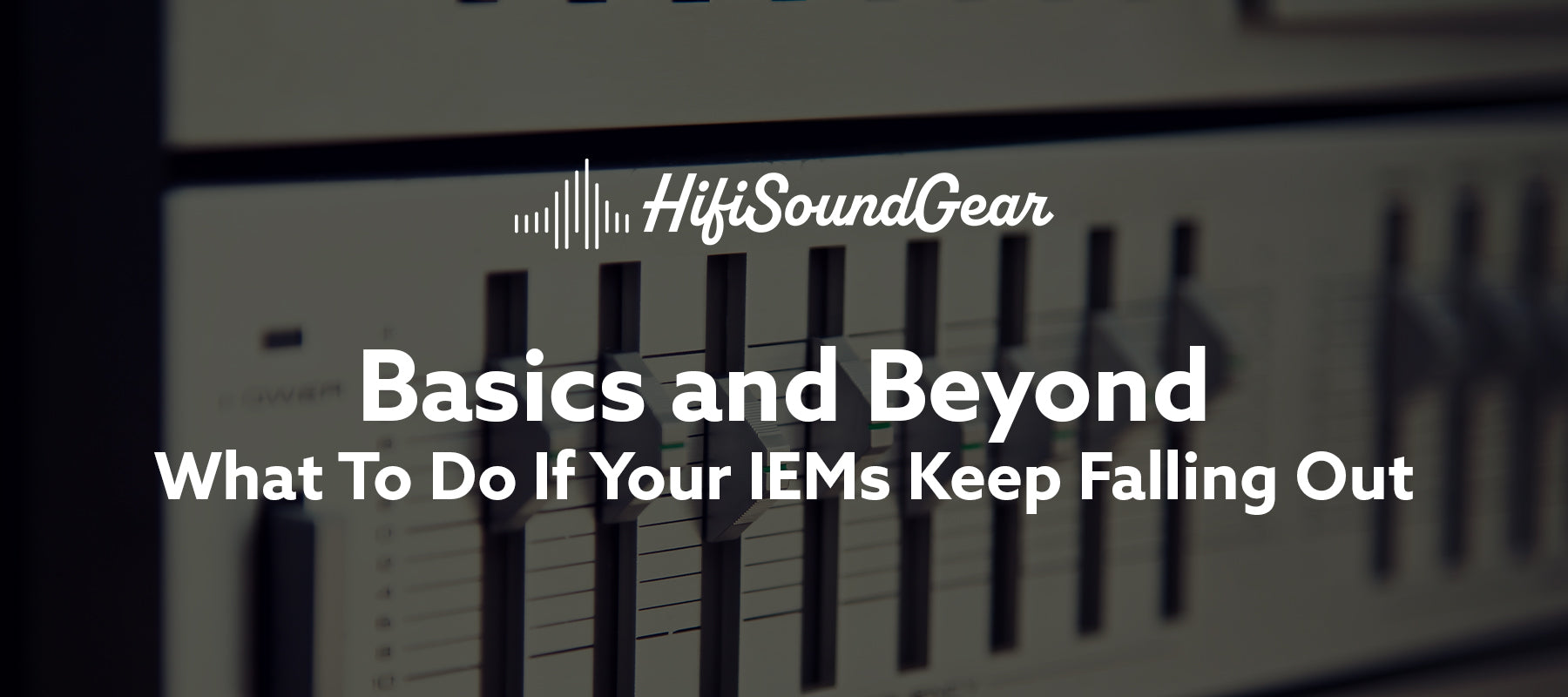
What To Do If Your IEMs Keep Falling Out
You're in the zone, grooving to your favorite track, when suddenly – plop! Another IEM making a break for freedom. If this scenario sounds painfully familiar, you're not alone. Many IEM users struggle with fit issues, making it the number one complaint among in-ear monitor enthusiasts. But fear not, audio adventurers! Let's turn those slippery sonic escapists into steadfast companions.
Understanding Why Your IEMs Keep Falling Out

Here's the thing about ears – they're like snowflakes, but warmer and significantly better at appreciating bass drops.
Each ear canal is uniquely shaped, which explains why that "universal" fit isn't quite living up to its name. The average ear canal isn't just a simple tube; it's more like a bendy straw doing its best impression of a maze.
Several factors can contribute to your IEMs playing hide and seek:
- Your ear canal's natural shape and size variations
- Movement during use (looking at you, gym warriors)
- The dreaded sweat factor
- Incorrect insertion depth
- Poor tip selection for your anatomy
Think of your ear canal like a custom-sized parking spot – if your IEM doesn't match the dimensions, it's either going to be too loose or uncomfortably wedged.
Mastering the Perfect Insertion Technique

Let's get one thing straight – shoving your IEMs in like you're stuffing a turkey isn't doing you any favors. The pro insertion technique, affectionately dubbed "the twist and lock," is your new best friend.
Here's the golden technique:
- Gently pull your outer ear up and back (yes, like at the doctor's office)
- Insert the IEM at a slight angle
- Rotate it forward as you push it in
- Allow the tip to expand and create a seal
Think of it like docking a spacecraft – precision and the right approach angle make all the difference between a successful mission and floating aimlessly in space.
Choosing the Right Ear Tips for Your Anatomy
Your choice of ear tips can make or break your IEM experience. Here's the rundown on your options:
Silicone Tips:
- Pros: Durable, easy to clean, great for multiple insertions
- Cons: Can get slippery, less conforming to ear canal shape
Foam Tips:
- Pros: Superior seal and isolation, excellent staying power
- Cons: Require replacement more often, can get dirty quickly
Hybrid Tips:
- Pros: Best of both worlds, combining stability with comfort
- Cons: Can be pricier, limited availability
Pro tip: Don't assume your ears are symmetrical. Many users need different sized tips for each ear. Mind. Blown.
Upgrading Your IEM Security Game

Sometimes, you need to call in the reinforcements. Third-party ear tips can be game-changers, offering features your stock tips could only dream of. Companies like Comply and SpinFit have built entire empires on the promise of better fit.
Cable management is your secret weapon:
- Use cable guides to prevent tugging
- Employ shirt clips to minimize movement
- Consider memory wire ear hooks for added stability
- Explore sports accessories designed for active use
When to Consider Custom IEMs
If you've tried everything and your IEMs still treat your ear canals like emergency exits, it might be time to go custom. Custom IEMs are like having a tailored suit for your ears – they fit perfectly because they're made specifically for you.
The process involves:
- Getting ear impressions from an audiologist
- Choosing your preferred shell material and design
- Waiting for your custom IEMs to be manufactured
- Enjoying that sweet, sweet perfect fit
Yes, they're pricier than universal IEMs, but can you really put a price on never having to chase after a runaway monitor again?
Professional Tips and Maintenance for Long-term Fit
Even the perfect fit needs maintenance. Here's how to keep your IEMs faithful:
- Clean your ear tips regularly using mild soap and water
- Replace foam tips every 2-3 months or when they lose elasticity
- Keep your ear canals clean (but please, leave the Q-tips alone)
- Store your IEMs properly to maintain tip shape
- Monitor for signs of tip degradation like hardening or loss of pliability
Remember: A clean IEM is a secure IEM. Wax buildup can affect both sound quality and fit stability.
The Final Mix
Don't let falling IEMs interrupt your sonic journey! Whether you opt for the perfect pair of third-party tips, master the art of proper insertion, or take the plunge into custom IEM territory, there's a solution out there for your unique ears.
Remember these key points:
- Proper insertion technique is crucial
- Experiment with different tip materials and sizes
- Consider your usage environment when choosing solutions
- Maintain your gear for consistent performance
Now get back out there and enjoy your music, secure in the knowledge that your IEMs are going nowhere except deeper into those sweet soundscapes. After all, the only things that should be dropping are beats, not your IEMs!
Elevate Your Listening Experience With These Related Articles
Enjoyed this article? Feel free to check out these related topics!

